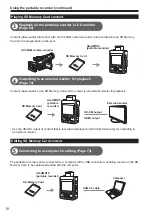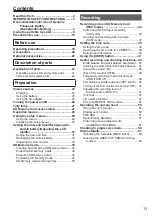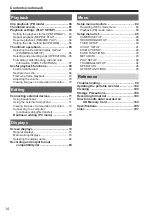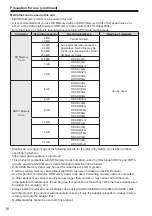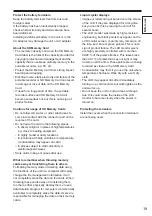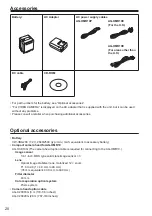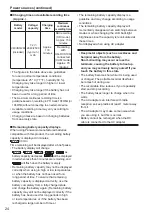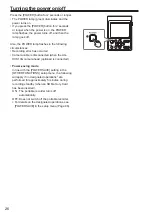
18
Operating precautions
The portable recorder and SD Memory Card
become warm during usage. This is not a defect.
Do not allow any water to get into the unit when
using it in the rain or snow or at the beach.
• Failure to heed this caution will cause the unit
or a card to malfunction (and may result in
irreparable damage).
The portable recorder should be used as far
as possible from sources of magnetism and
electromagnetism (cell phones, microwave
ovens, TVs, game machines, etc.).
• If the portable recorder is operated on top of or
close to a TV, the electromagnetism can cause
distortion of audio and video.
• Strong magnetism from speakers, large motors, etc. can
cause recordings to be lost and video to be distorted.
• Electromagnetic waves emitted from digital
circuits, including microcomputers, can impact
each other, causing distortion of audio and video.
• If the portable recorder is so adversely affected
that it does not operate normally, remove the
battery or AC adaptor, reconnect them and turn
the power on again.
As much as possible, avoid using the portable
recorder close to radio towers and high-voltage lines.
• If used close to these places, radio waves and high
voltage can adversely affect recorded audio and video.
Use the cords and cables that are provided with the
portable recorder or separately sold accessories.
Do not extend the cords and cables to use.
If using the portable recorder at the beach or
any place that is sandy or dusty, take care that
sand and dust do not get inside the portable
recorder or on its terminals. Do not allow the
portable recorder to get wet with salt water, etc.
• Sand and dust can damage the unit or a card.
(Be especially careful when inserting or removing
a card.)
• If the portable recorder has come in contact with
salt water, wipe with a cloth that has been well
wrung out, then wipe with a dry cloth.
If insect sprays or other volatile substances are
being used in the area, take care that they do
not come in contact with the portable recorder.
• These can warp the unit or cause the finish to come off.
• Do not leave the unit in contact with rubber or
PVC products for extended periods of time.
When carrying the portable recorder, take care
not to drop it or let it hit other objects.
• Strong impact can cause the outer case to break
or damage the portable recorder.
AC adapter and battery
• If the charging lamp blinks continuously, check
to make sure that there is no dust, dirt or foreign
matter on the terminals of the battery or AC
adaptor, then reconnect correctly. If there is dust,
dirt or foreign matter, unplug the power plug from
the outlet and remove the dust, dirt or foreign
matter. If the charging lamp continues to blink, it
is possible that the temperature is too high or too
low, or that the battery or AC adaptor has failed.
Inquire at the shop where you purchased the
portable recorder.
• The battery takes longer to charge when it is
warm.
• The AC adapter can interfere with radio reception
so keep radios at least 1 meter away from it.
• The AC adapter may make some noise when you
are using it, but this is normal.
Place the portable recorder close to a power
outlet, and make sure that a cutoff (the power
plug) is easily accessible.
After use, remove the battery and disconnect
the AC power supply cable.
Battery characteristics
The rechargeable lithium ion battery used with
this unit is readily affected by temperature and
humidity. In cold places, the full battery indication
may not appear and a low battery warning may
appear approx. 5 minutes after starting use. In
high temperatures, a protective function may be
triggered, preventing use.
Remove the battery after use.
Completely remove the battery. (The battery
continues to be used even if you have turned the
unit off.) The battery can over discharge if you
leave it in the unit and it may become impossible to
recharge it.
Disposing of spent batteries
• The battery will become unchargeable. Rather
than throwing the battery into the garbage, take it
to a store that can assist in recycling it.
Summary of Contents for AVCCAM AG-HMR10P
Page 110: ...E P ...







